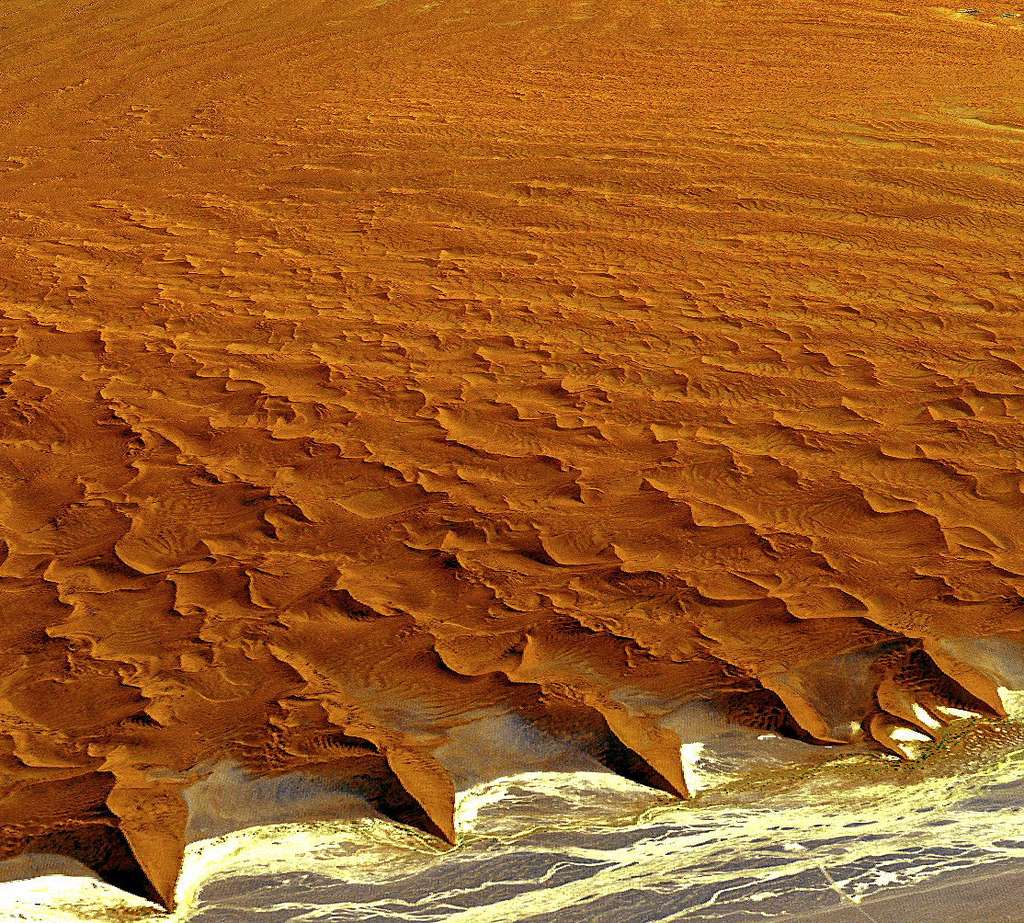
Nombre total de pages vues
12/07/2020
ESA, Rosetta, NAVCAM : Comet CG Creates Its Dust Tail (Science & Technology - Astronomy picture of the day)
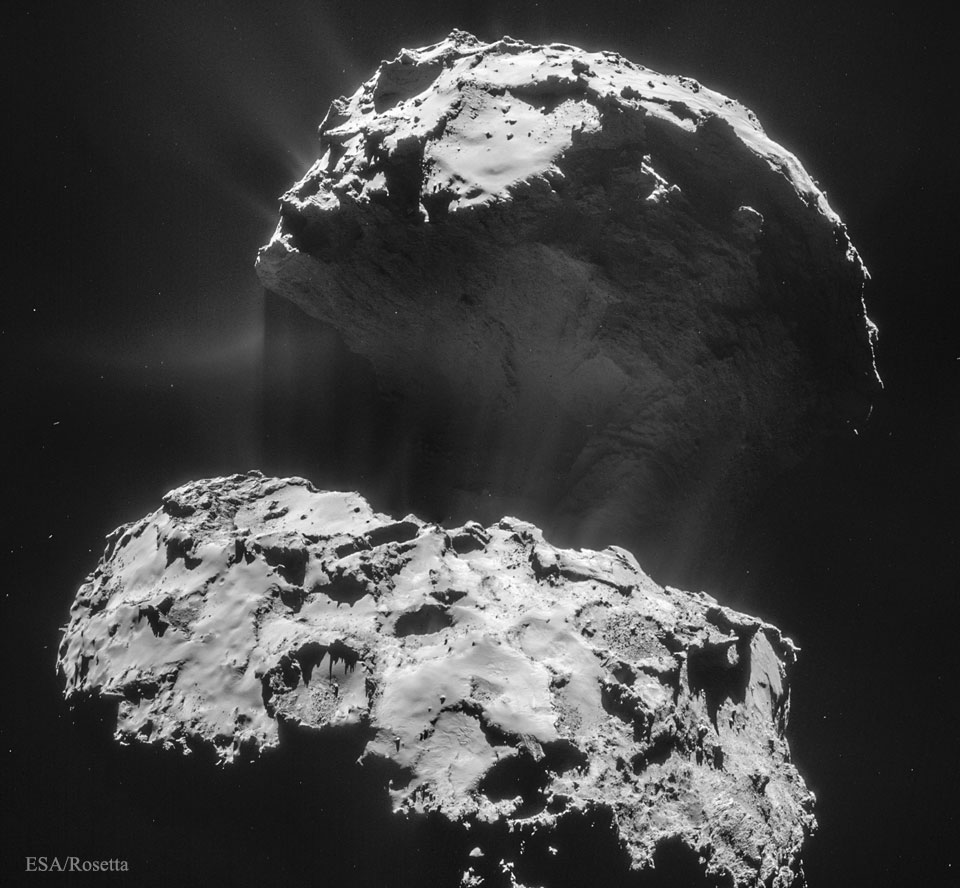
Explanation: Where do comet tails come from? There are no obvious places on the nuclei of comets from which the jets that create comet tails emanate. One of the best images of emerging jets is shown in the featured picture, taken in 2015 by ESA's robotic Rosetta spacecraft that orbited Comet 67P/Churyumov-Gerasimenko (Comet CG) from 2014 to 2016. The picture shows plumes of gas and dust escaping numerous places from Comet CG's nucleus as it neared the Sun and heated up. The comet has two prominent lobes, the larger one spanning about 4 kilometers, and a smaller 2.5-kilometer lobe connected by a narrow neck. Analyses indicate that evaporation must be taking place well inside the comet's surface to create the jets of dust and ice that we see emitted through the surface. Comet CG (also known as Comet 67P) loses in jets about a meter of radius during each of its 6.44-year orbits around the Sun, a rate at which will completely destroy the comet in only thousands of years. In 2016, Rosetta's mission ended with a controlled impact onto Comet CG's surface.
09/07/2020
Emmanuel Paoly : Noctilucent Clouds and Comet NEOWISE (Science & Technology - (Astronomy picture of the day)
2020 july 9
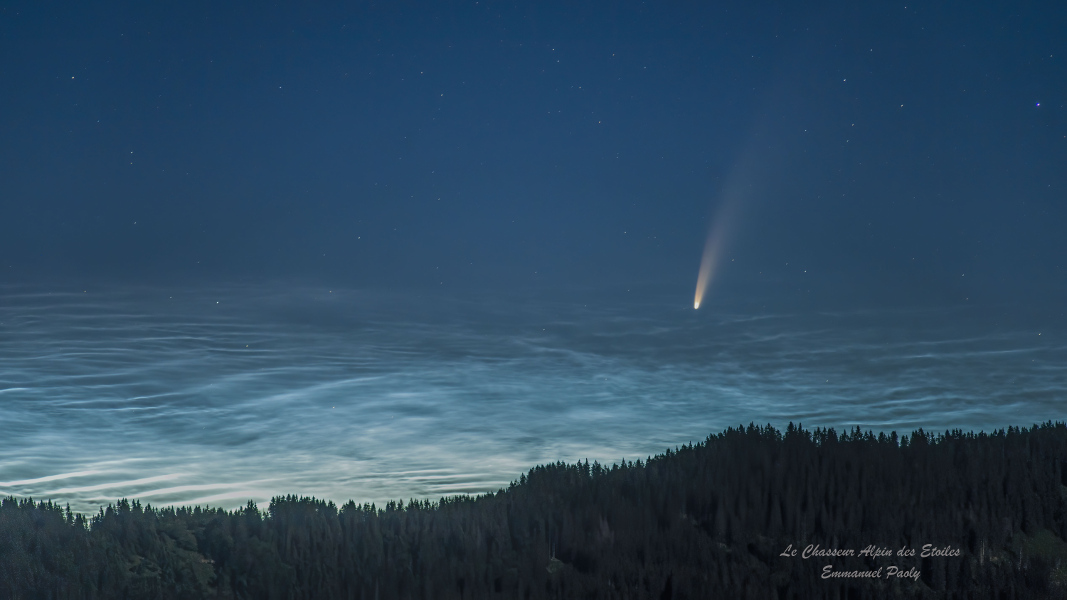
Image Credit & Copyright: Emmanuel Paoly
Explanation: These silvery blue waves washing over a tree-lined horizon in the eastern French Alps are noctilucent clouds. From high in planet Earth's mesosphere, they reflect sunlight in this predawn skyscape taken on July 8. This summer, the night-shining clouds are not new to the northern high-latitudes. Comet NEOWISE is though. Also known as C/2020 F3, the comet was discovered in March by the Earth-orbiting Near Earth Object Wide-field Infrared Survey Explorer (NEOWISE) satellite. It's now emerging in morning twilight only just visible to the unaided eye from a clear location above the northeastern horizon.
08/07/2020
Le Monde - France - L’origine du coronavirus SARS-CoV-2 (Science & Technologie - Santé/Médecine)

D’où vient ce virus ? La communauté scientifique n’a pas encore tranché la question. Une forte parenté génétique entre le SARS-CoV-2 et des coronavirus prélevés sur des chauves-souris a été constatée. Mais cela n’explique pas tout : les spécialistes estiment qu’un hôte intermédiaire l’a transmis à l’homme, comme c’est souvent le cas. Pour le SRAS et le MERS, par exemple, la civette et le dromadaire avaient été respectivement identifiés comme porteurs intermédiaires.
En ce qui concerne le coronavirus actuel, le pangolin figure actuellement parmi les principaux « suspects », puisqu’il est porteur d’un coronavirus au profil génétique très proche de celui du SARS-CoV-2, mais cette hypothèse reste à confirmer.
07/07/2020
Science & Technology - Astronomy picture of the day : Comet NEOWISE over Lebanon:
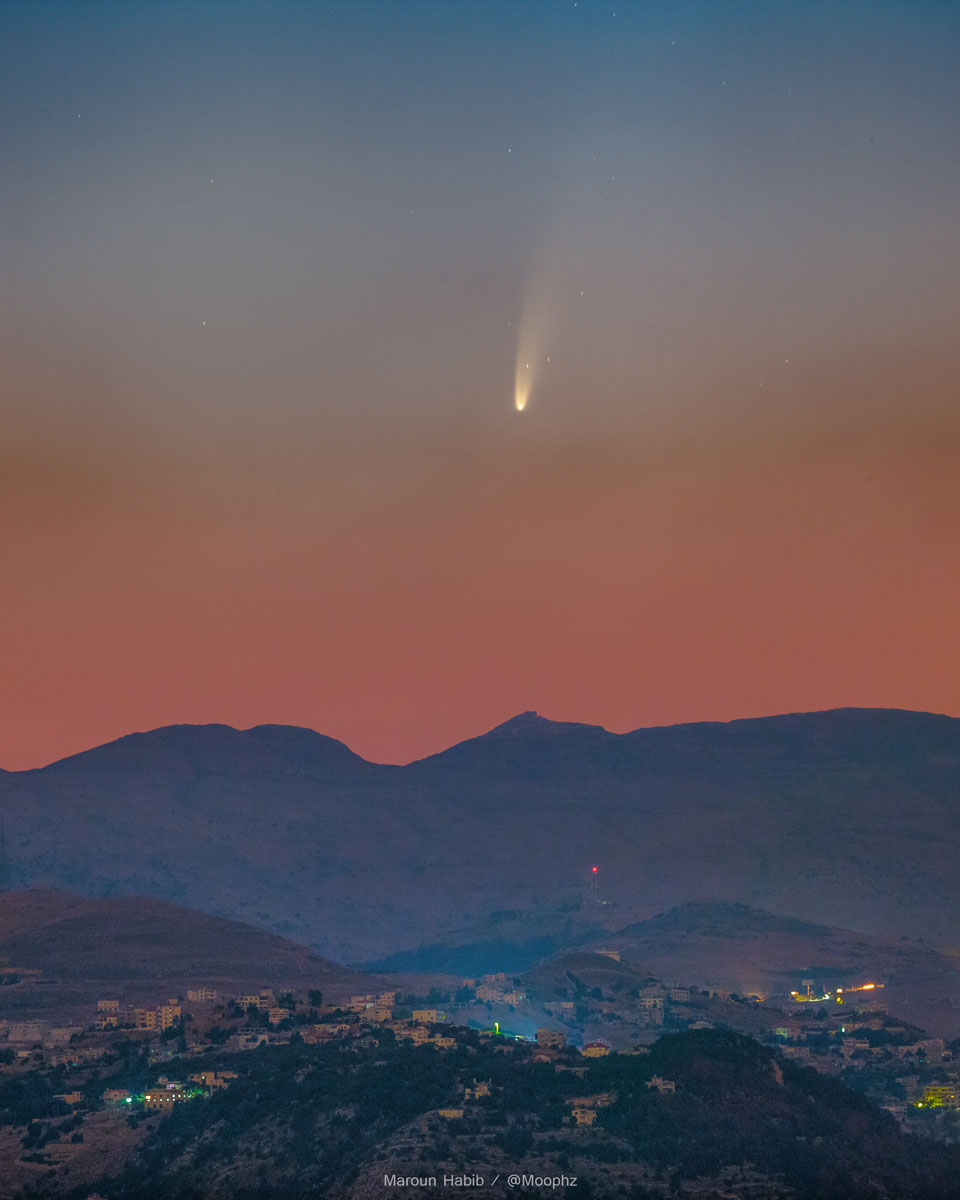
Image Credit & Copyright: Maroun Habib (Moophz)
Explanation: A comet has suddenly become visible to the unaided eye. Comet C/2020 F3 (NEOWISE) was discovered in late March and brightened as it reached its closest approach to the Sun, inside the orbit of Mercury, late last week. The interplanetary iceberg survived solar heating, so far, and is now becoming closer to the Earth as it starts its long trek back to the outer Solar System. As Comet NEOWISE became one of the few naked-eye comets of the 21st Century, word spread quickly, and the comet has already been photographed behind many famous sites and cities around the globe. Featured, Comet NEOWISE was captured over Lebanon two days ago just before sunrise. The future brightness of Comet NEOWISE remains somewhat uncertain but the comet will likely continue to be findable not only in the early morning sky, but also next week in the early evening sky.
04/07/2020
Science & Technology - Astronomy picture of the day : Meeting in the Mesosphere:

Image Credit & Copyright: Stephane Vetter (TWAN, Nuits sacrees)
Explanation: A sensitive video camera on a summit of the Vosges mountains in France captured these surprising fireworks above a distant horizon on June 26. Generated over intense thunderstorms, this one about 260 kilometers away, the brief and mysterious flashes have come to be known as red sprites. The transient luminous events are caused by electrical breakdown at altitudes of 50 to 100 kilometers. That puts them in the mesophere, the coldest layer of planet Earth's atmosphere. The glow beneath the sprites is from more familiar lighting though, below the storm clouds. But on the right, the video frames have captured another summertime apparition from the mesophere. The silvery veins of light are polar mesospheric clouds. Also known as noctilucent or night shining clouds, the icy clouds still reflect the sunlight when the Sun is below the horizon.
01/07/2020
30/06/2020
29/06/2020
Science & Technology - Astronomy pictrure of the day : Dark Sky Reflections
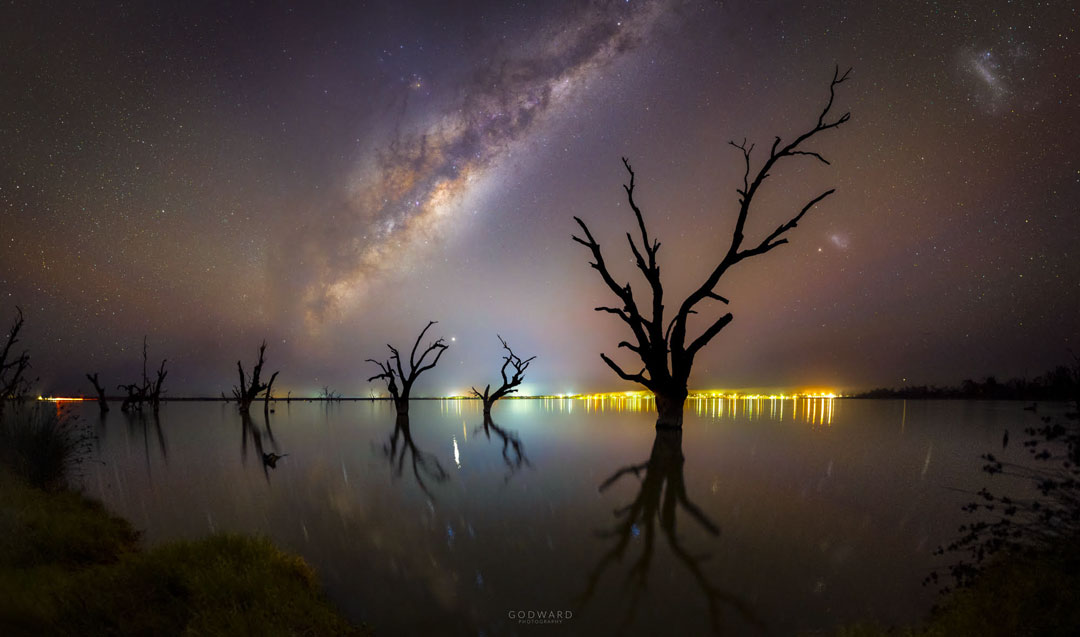
Image Credit & Copyright: Will Godward
Explanation: When the lake calmed down, many wonders of the land and sky appeared twice. Perhaps the most dramatic from the dark sky was the central band of our Milky Way Galaxy, visible as a diagonal band. Toward the right were both the Small (SMC) and Large (LMC) Magellanic Clouds, satellite galaxies of our Milky Way. Faint multicolored bands of airglow fanned across the night. Numerous bright stars were visible including Antares, while the bright planet Jupiter appears just above the image center. The featured image is a composite of exposures all taken from the same camera and from the same location within 30 minutes in mid-May from the shore of Lake Bonney Riverland in South Australia. Dead trees that extend from the lake were captured not only in silhouette, but reflection, while lights from the small town of Barmera were visible across the lake. In July, Jupiter and Saturn will rise toward the east just as the Sun sets in the west.
Inscription à :
Articles (Atom)
ASTRONOMY - Star Trails over One-Mile Radio Telescope
2025 September 13 Star Trails over One-Mile Radio Telescope Image Credit & Copyright : Joao Yordanov Serralheiro Explanation: The s...

-
2022 September 26 All the Water on Planet Earth Illustration Credit: Jack Cook, Adam Nieman, Woods Hole Oceanographic Institution ; Data ...
-
2021 August 11 Mammatus Clouds over Saskatchewan Image Credit & Copyright: Michael F Johnston Explanation: When do cloud bottoms appe...
